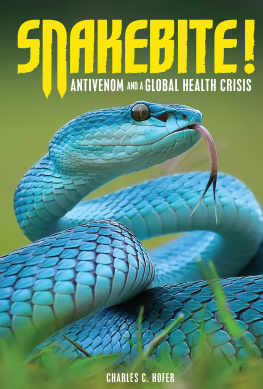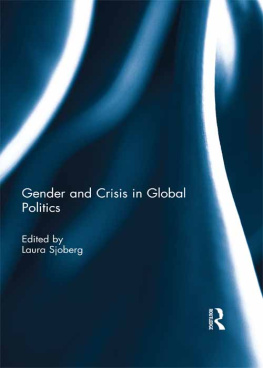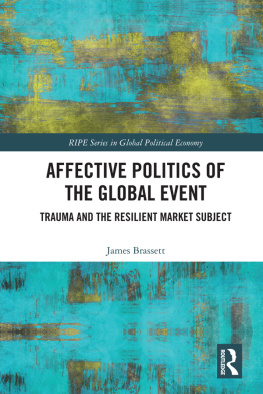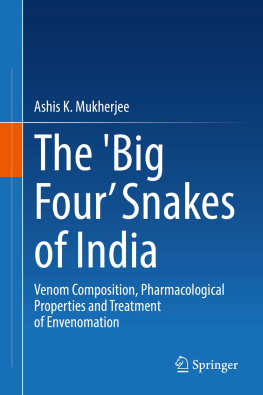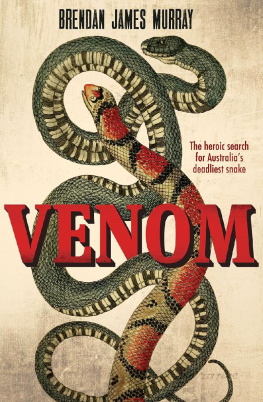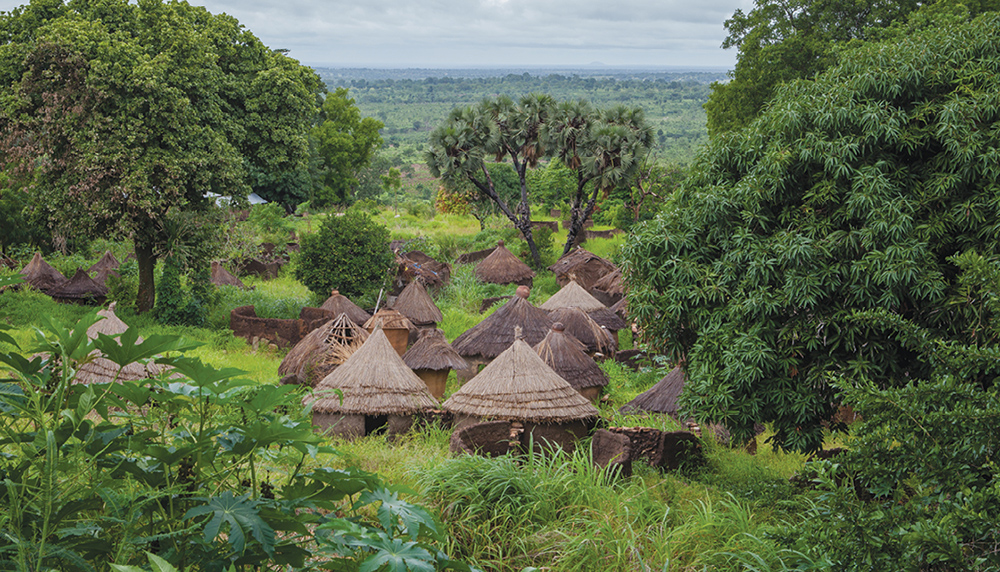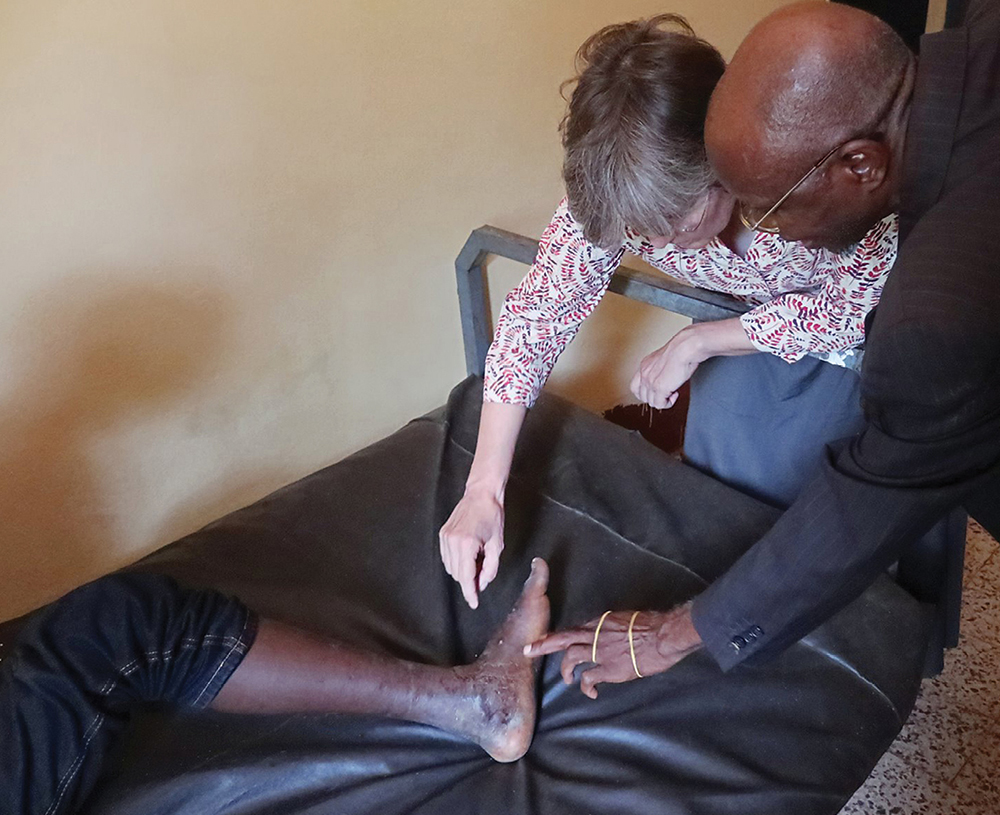Acknowledgments
The author would like to thank the many people who helped out during the course of this project. First and foremost, many thanks to Dr. Leslie Boyer for answering endless questions. Thanks to Dr. Alejandro Alagn for inviting me to his lab in Cuernavaca, Mexico, and the ranch in Pueblo, Mexico; to Stephane Poulin of the Arizona-Sonora Desert Museum; to Edgar, Melisa, and Roberto for their help in Mexico; and to Ray Morgan, Connie Choza, Dr. Carlo Valentino, Anna and Domenica and, of course, Gracie, for her moral support.
Text copyright 2019 by Charles C. Hofer
All rights reserved. International copyright secured. No part of this book may be reproduced, stored in a retrieval system, or transmitted in any form or by any meanselectronic, mechanical, photocopying, recording, or otherwisewithout the prior written permission of Lerner Publishing Group, Inc., except for the inclusion of brief quotations in an acknowledged review .
Twenty-First Century Books
A division of Lerner Publishing Group, Inc.
241 First Avenue North
Minneapolis, MN 55401 USA
For reading levels and more information, look up this title at www.lernerbooks.com .
Library of Congress Cataloging-in-Publication Data
Names: Hofer, Charles, author.
Title: Snakebite ! : antivenom and a global health crisis / Charles C. Hofer.
Description: Minneapoli s : Twenty-First Century Books, [2019 ] | Audience: Age 1318 . | Audience: Grade 9 to 12 . | Includes bibliographical references and index.
Identifiers: LCCN 2017046976 (print ) | LCCN 2017048478 (ebook ) | ISBN 781541524798 (eb pdf ) | ISBN 781512483734 (l b : alk. paper)
Subjects: LCSH: Poisonous snakesJuvenile literature . | SnakebitesJuvenile literature . | Antivenins . | Medical careJuvenile literature.
Classification: LCC QL666.O6 (ebook ) | LCC QL666.O6 H654 2019 (print ) | DDC 597.96/165dc23
LC record available at https://lccn.loc.gov/2017046976
Manufactured in the United States of America
1-43367-33179-5/15/2018
CONTENTS
Introduction
A Deadly Bite
Chapter 1
A Gathering Storm
Chapter 2
A World of Venomous Snakes
Chapter 3
A Toxic Brew
Chapter 4
The Lifesaver
Chapter 5
Into the Snake Pit
Chapter 6
A Global Perspective
Chapter 7
Reversing the Vicious Circle
Chapter 8
Unlocking the Mystery of Venom
Introduction
A Deadly Bite
Venomous snakes live all over the world, and their deadly bites kill thousands of people each year, especially in regions such as sub-Saharan Africa, Southeast Asia, and South America.
On a hot August night, three medical doctors settle in for a relaxing dinner after a long days work. American physician Dr. Leslie Boyer and two colleagues have spent the day visiting a small hospital in Tanguita, a small village in the African nation of Benin.
At dinner the three doctors talk about the days events and the work that lies ahead. They have come to Benin to train local medical workers and to help solve a health crisis that is ravaging this part of the world. The epidemic is snakebite, a health crisis that strikes young and old alike, killing tens of thousands each year across sub-Saharan Africa. This large, tropical region stretches across the continent south of the Sahara, the worlds largest hot desert. The region includes the nations of Ethiopia, Nigeria, and Rwanda.
People in Benin and other African nations experience hundreds of snakebites each year.
A cell phone rings. I know you were just here all day, says a frantic voice on the other end. But a little boy has just arrived, and hes desperately sick! Within minutes the three doctors abandon their meal and are back in their Land Rover, lurching over the endless bumpy dirt roads that crisscross the sprawling Benin countryside. The journey back to the hospital in Tanguita will take an hour, and every second counts.
The doctors arrive shortly before midnight. Hospital workers swiftly escort them to a ten-year-old boy curled up in a small hospital bed. He is bleeding from his eyes, and he is going into shock, a medical emergency that causes basic bodily functions such as breathing to shut down. The boy is unable to talk or hold himself up. His abdomen is swollen too, suggesting that he might be bleeding from the inside.
To Boyer and her colleagues, the cause of the symptoms is obvious: the boy was bitten by a venomous snake. Such snakes use a dangerous biological chemical known as venom to ward off perceived threats. The venom can be deadly to people and other animals. In talking with the boys family, the staff knows that the boys bite occurred less than fourteen hours ago. His condition is getting worse with each passing minute. At the location of the bite, near the boys ankle, the skin has turned dark. His ankle has puffed up with swelling. The snakes venom is spreading rapidly, coursing through the young boys body and attacking it from the inside.
Small cuts on the boys leg near the bite indicate that a family member or local healer tried traditional healing methods before bringing the boy to the hospital. These methods often involve cutting the wound so the snake venom will leak out with the blood. However, this causes an additional loss of blood and delays proper medical attention. The only lifesaving treatment for a venomous snakebite is antivenom. The medicine is created from the deadly venom itself. If doctors dont take action immediately, the boy will die before sunrise.
Dr. Boyer ( left ) of the University of Arizona in Tucson, Arizona, and a local doctor examine a snakebite patient in Benin. The boys foot and ankle are dark and swollen, common symptoms of a snakebite.
The hospital has already given the boy the only two vials of antivenom they had. But the medicine did not slow the effects of the snakes venom. Luckily, one of Boyers colleagues has brought a personal supply of effective antivenom with him. Will this be enough? The clock is ticking, and the venom already has a significant head start.
The doctors carefully administer the medicine, using a needle to inject the boy with a higher dose and at a faster rate than is typical for antivenom. Its a dangerous way to deliver the medicine, but they have no other options. Time is running out.
The team steps back to watch the boy as the antivenom goes to work. If it doesnt work, nothing more can be done.
In less than an hour, the boy stops bleeding. His breathing returns to normal, and he sits up in bed. My leg itches! he exclaims. Everyone in the room breathes a sigh of relief. The boy is well on his way to recovery.
Chapter 1
A Gathering Storm
From South America to the South Pacific, venomous snakes bite one million people each year. More than one hundred thousand people die from their bites, and many more are permanently injured. Worldwide, about four hundred thousand snakebite patients undergo amputation (removal of limbs from the body). Snake venom is aggressive, and it can destroy skin, muscles, and organs if not treated quickly. This kind of injury can be devastating to a family or community, especially in nations where medical care is limited.

